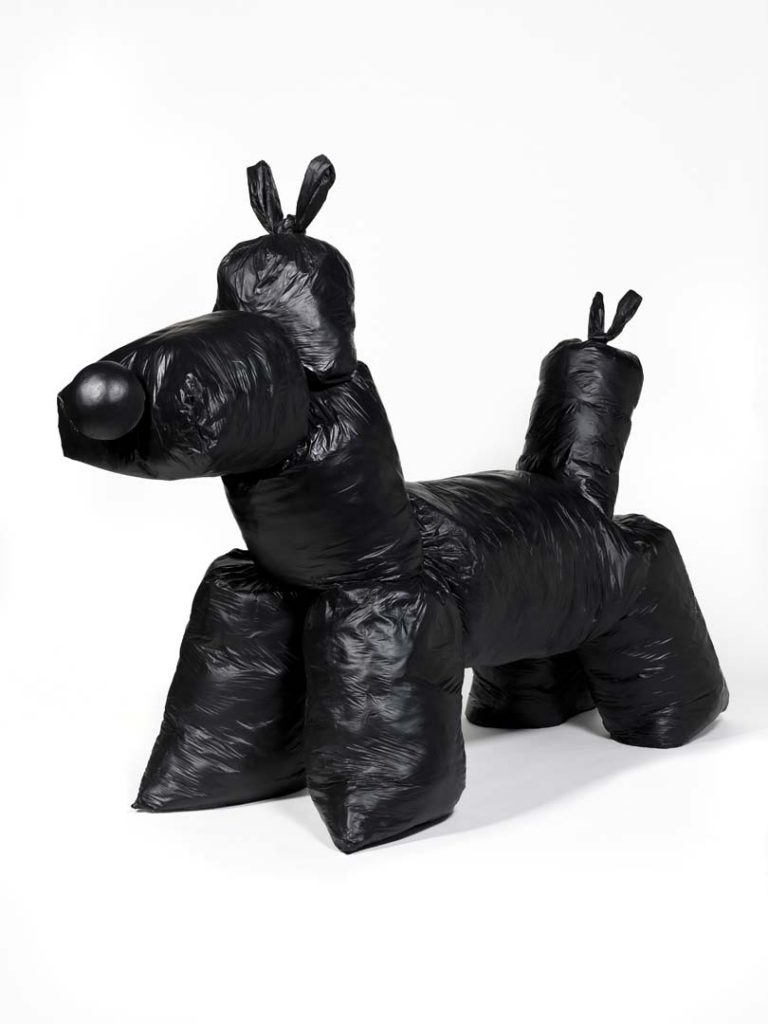We acknowledge the Traditional Owners of the land on which the Queensland Art Gallery | Gallery of Modern Art stands and recognise the creative contribution First Australians make to the art and culture of this country.

Gimhongsok / South Korea b.1964 / Canine Construction 2009 / Resin, ed. 1/2 / 162 x 235 x 88cm / Purchased 2012. Queensland Art Gallery / Collection: Queensland Art Gallery | Gallery of Modern Art / © Gimhongsok
GimhongsokCanine Construction 2009
Not Currently on Display
Gimhongsok’s work is characterised by a deadpan humour. References to art history and contemporary culture collide with political and ethical questions, visual gags and sophisticated ruminations on artistic materials. Canine Construction 2009, one of Gimhongsok’s wry proposals for an ideal work of public art, is a sculpture of a dog made out of easy-tie garbage bags cast in resin.
Since 2006, the artist’s fascination with the role of culture in society has focused on monuments and the difficulty of achieving consensus when it comes to public works of art. Interested in the creative possibilities of translation from one context to another, Gimhongsok cheekily draws on the balloon-dog sculptures of Jeff Koons, remaking the North American artist’s works with garbage bags before casting them in expensive resin. A blend of low-rent and high-gloss aesthetics, Canine Construction plays on the idea of value as a measure of social agreement, and the exalted status often applied to works of art.
What constitutes an ideal work of public art? This has preoccupied Gimhongsok since 2006. In some cases, his responses have been ideal in the literal sense: unrealisable plans delivered in the form of mock lectures, or proposals so absurd that they can only be relayed by actors trained to recall them from memory. With his ‘Public Nature’ sculptures, the monuments the artist proposes are visually humble, cobbled together from plastic bags, cardboard boxes and other consumer detritus. In a perverse twist, however, his life-sized maquettes are produced in high-cost materials like bronze and resin.
Such perversity is not an unusual trait of a Gimhongsok work, given the artist’s longstanding interest in the shortcomings of communication and address. He has a particular fascination with the dynamics of translation between languages and cultures, the unpredictability with which meaning is conveyed, miscommunicated and produced anew. Art, for Gimhongsok, is already fraught with ethical dilemmas; his genius lies in exacerbating these, filtering them through the foibles of translation, its missteps and eccentricities. And, is there anything more prone to misstep and eccentricity than public art?